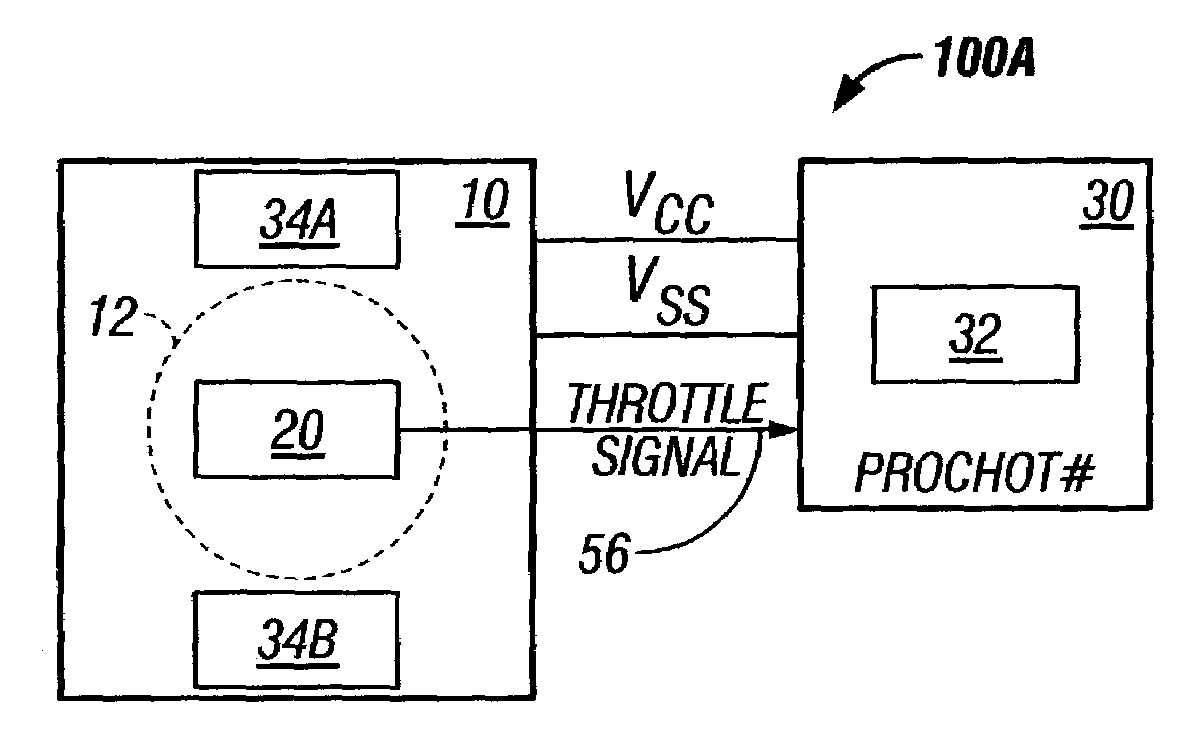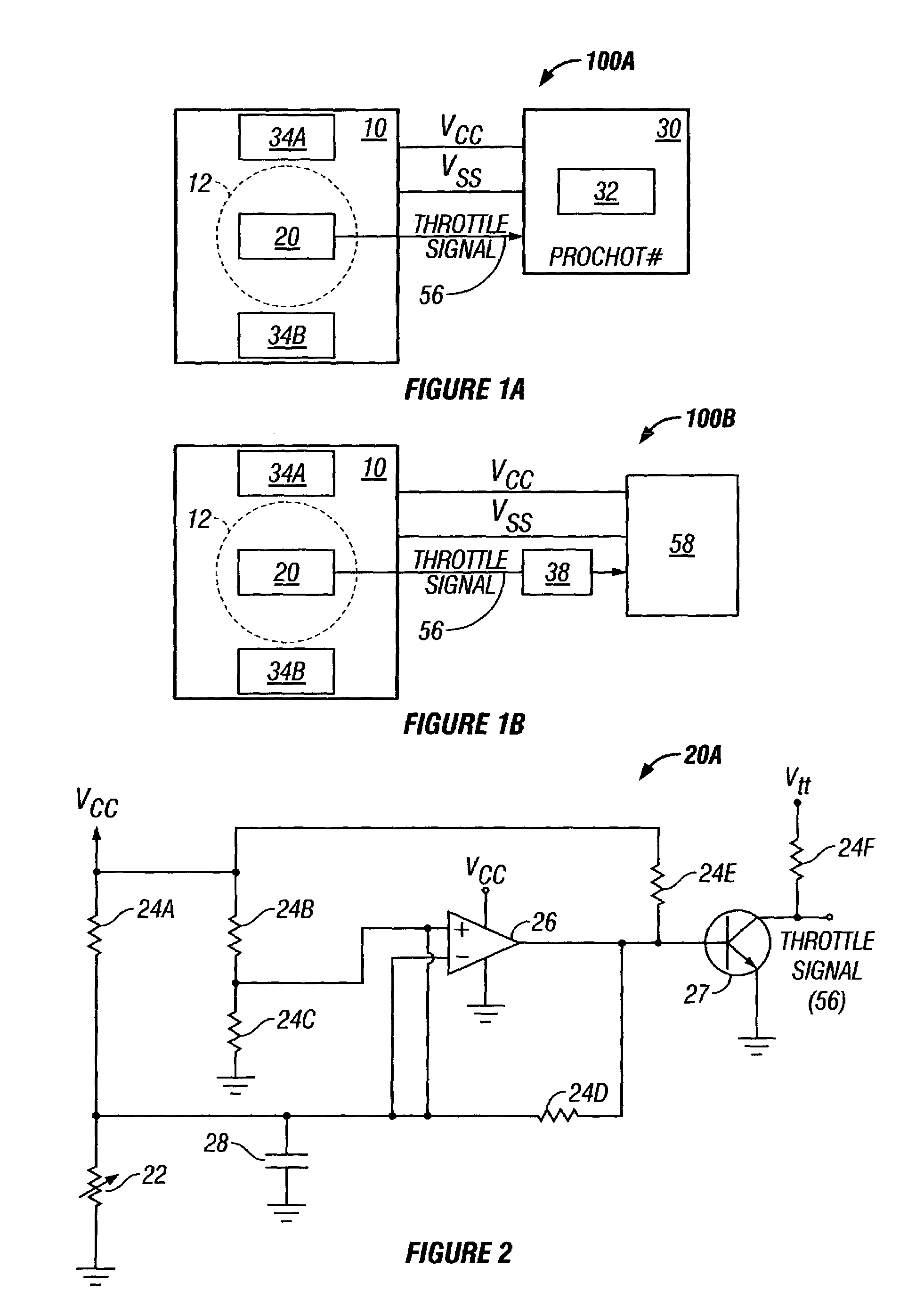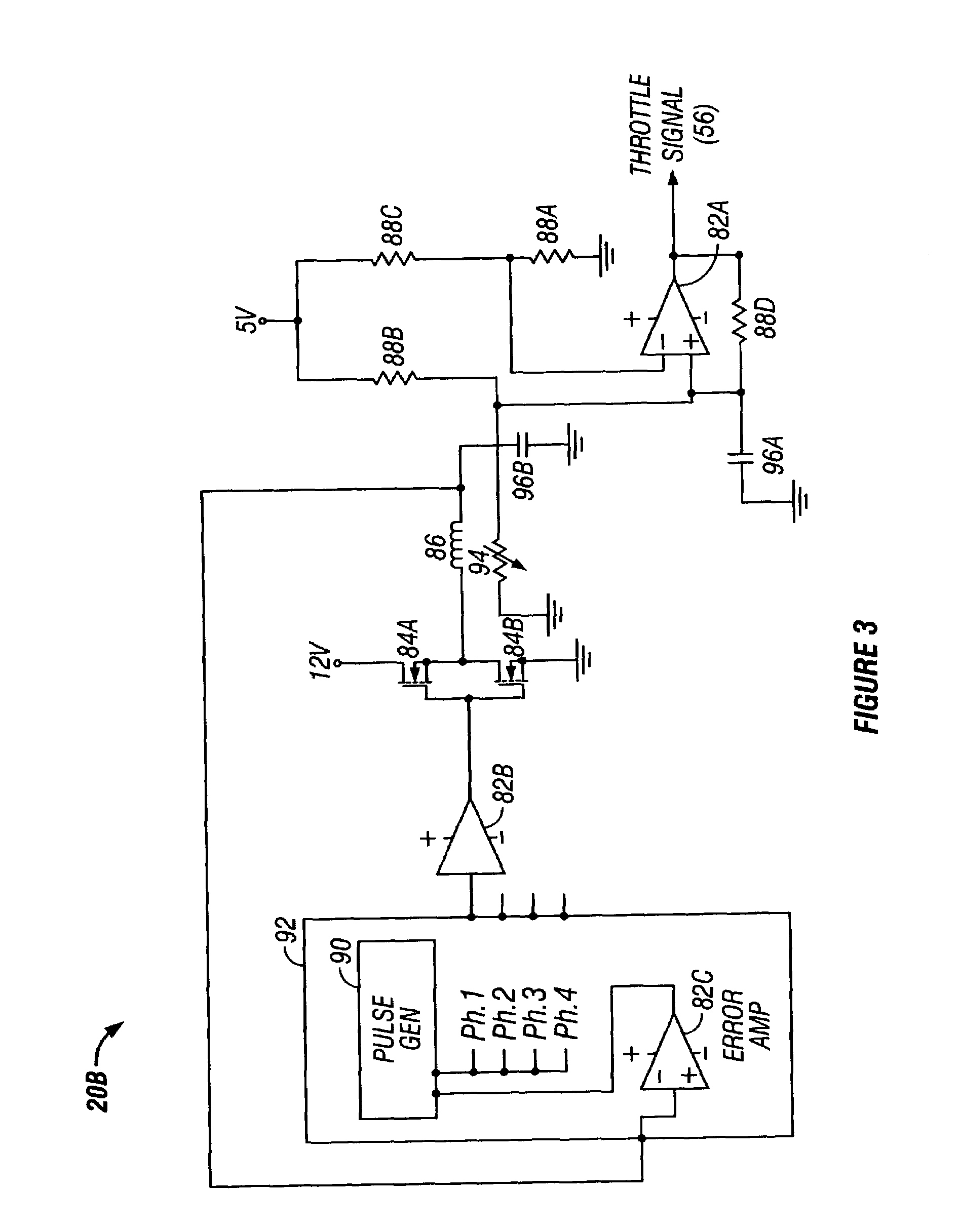Control of voltage regulator thermal condition
a voltage regulator and thermal condition technology, applied in the direction of electric variable regulation, process and machine control, instruments, etc., can solve the problems of shortening the product life, affecting the operation of the application, and exceeding the temperature of the voltage regulator components
- Summary
- Abstract
- Description
- Claims
- Application Information
AI Technical Summary
Problems solved by technology
Method used
Image
Examples
Embodiment Construction
[0017]In accordance with the embodiments described herein, a system automatically adjusts microprocessor activity when the thermal stress of a voltage regulator is identified. A thermal monitoring circuit examines a location on the voltage regulator to determine whether the voltage regulator has exceeded a predetermined temperature, also known as an over-temperature condition. Alternatively, the thermal monitoring circuit detects the over-temperature condition of the voltage regulator indirectly, such as by measuring its average output (or input) current. When the over-temperature condition is identified, a signal activates the PROCHOT#, or similar, pin on a microprocessor, which, among other actions, throttles, or slows down, the microprocessor clock. Alternatively, an external clock coupled to the microprocessor is throttled to slow down the microprocessor. In either case, when the microprocessor is slowed down, its current (or power) demand is reduced, relieving the demand on the...
PUM
 Login to View More
Login to View More Abstract
Description
Claims
Application Information
 Login to View More
Login to View More - R&D
- Intellectual Property
- Life Sciences
- Materials
- Tech Scout
- Unparalleled Data Quality
- Higher Quality Content
- 60% Fewer Hallucinations
Browse by: Latest US Patents, China's latest patents, Technical Efficacy Thesaurus, Application Domain, Technology Topic, Popular Technical Reports.
© 2025 PatSnap. All rights reserved.Legal|Privacy policy|Modern Slavery Act Transparency Statement|Sitemap|About US| Contact US: help@patsnap.com



